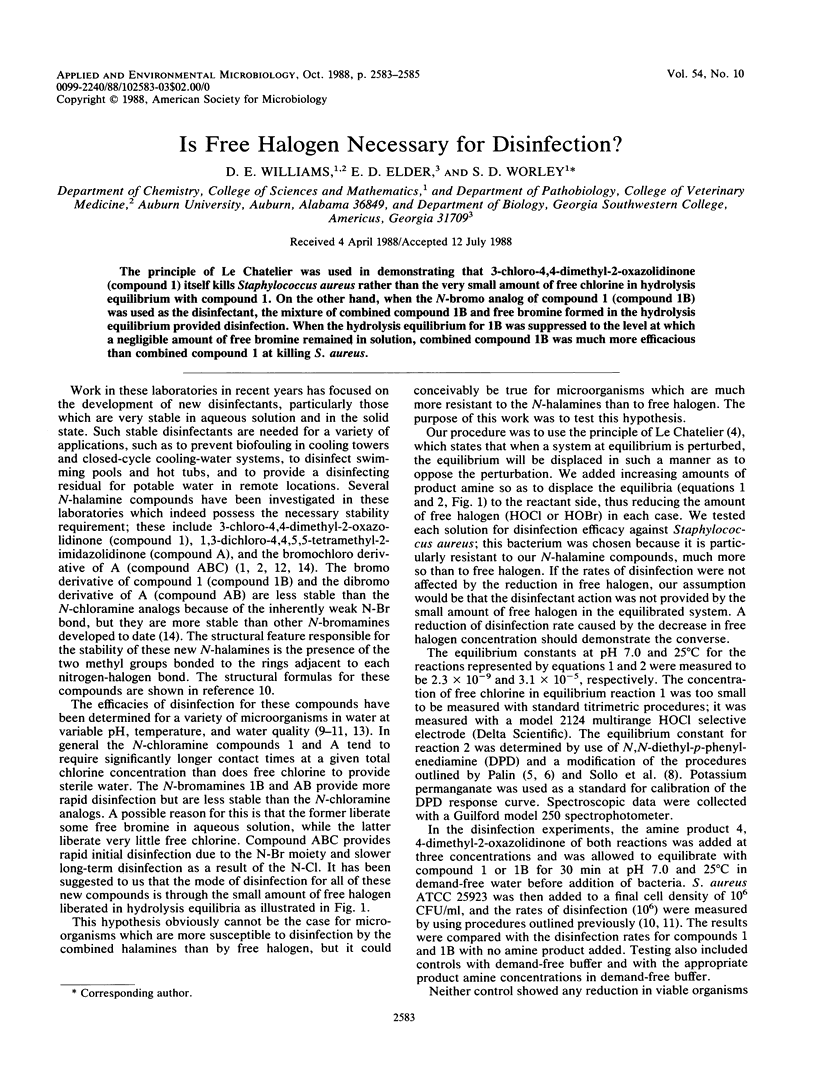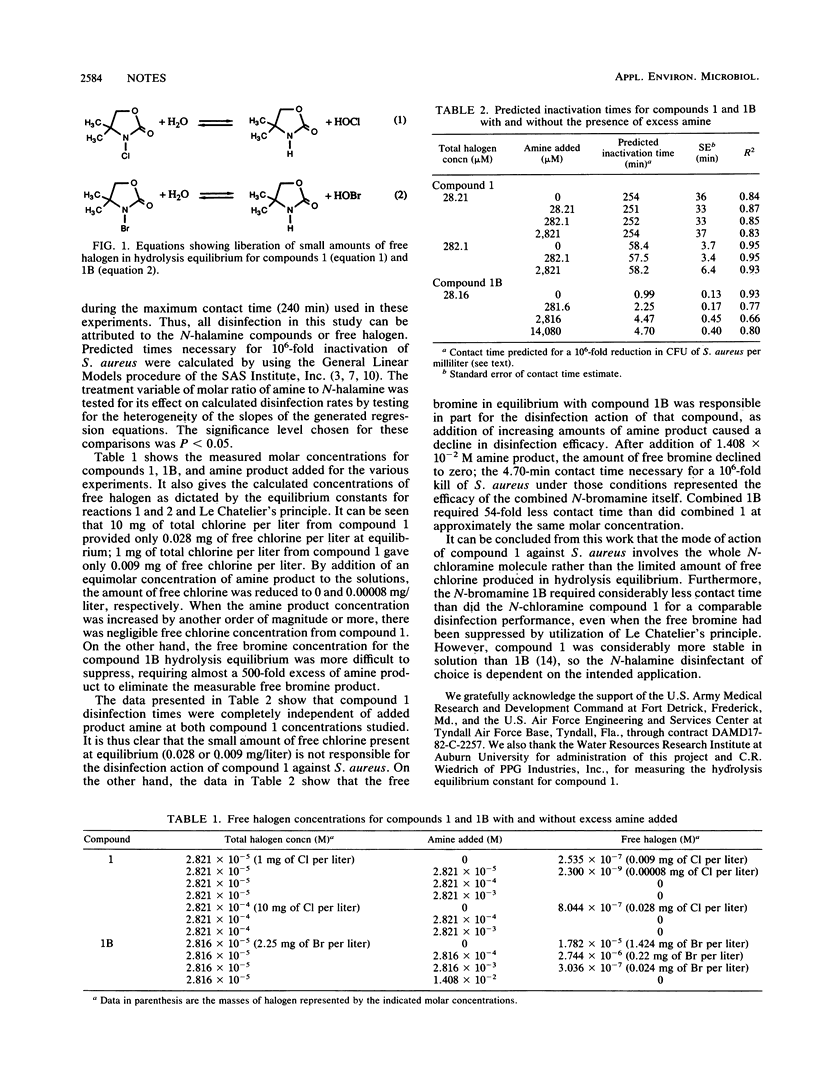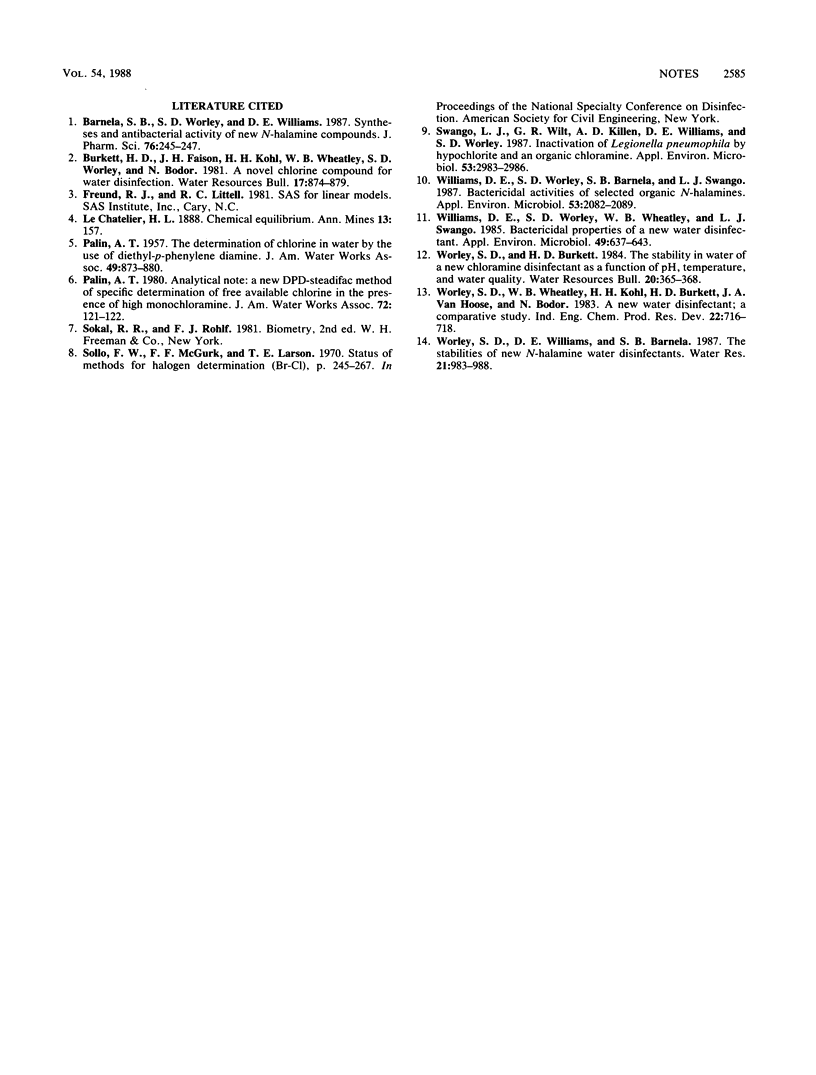Abstract
The principle of Le Chatelier was used in demonstrating that 3-chloro-4,4-dimethyl-2-oxazolidinone (compound 1) itself kills Staphylococcus aureus rather than the very small amount of free chlorine in hydrolysis equilibrium with compound 1. On the other hand, when the N-bromo analog of compound 1 (compound 1B) was used as the disinfectant, the mixture of combined compound 1B and free bromine formed in the hydrolysis equilibrium provided disinfection. When the hydrolysis equilibrium for 1B was suppressed to the level at which a negligible amount of free bromine remained in solution, combined compound 1B was much more efficacious than combined compound 1 at killing S. aureus.
Full text
PDF


Selected References
These references are in PubMed. This may not be the complete list of references from this article.
- Barnela S. B., Worley S. D., Williams D. E. Syntheses and antibacterial activity of new N-halamine compounds. J Pharm Sci. 1987 Mar;76(3):245–247. doi: 10.1002/jps.2600760314. [DOI] [PubMed] [Google Scholar]
- Swango L. J., Wilt G. R., Killen A. D., Williams D. E., Worley S. D. Inactivation of Legionella pneumophila by hypochlorite and an organic chloramine. Appl Environ Microbiol. 1987 Dec;53(12):2983–2986. doi: 10.1128/aem.53.12.2983-2986.1987. [DOI] [PMC free article] [PubMed] [Google Scholar]
- Williams D. E., Worley S. D., Barnela S. B., Swango L. J. Bactericidal activities of selected organic N-halamines. Appl Environ Microbiol. 1987 Sep;53(9):2082–2089. doi: 10.1128/aem.53.9.2082-2089.1987. [DOI] [PMC free article] [PubMed] [Google Scholar]
- Williams D. E., Worley S. D., Wheatley W. B., Swango L. J. Bactericidal properties of a new water disinfectant. Appl Environ Microbiol. 1985 Mar;49(3):637–643. doi: 10.1128/aem.49.3.637-643.1985. [DOI] [PMC free article] [PubMed] [Google Scholar]


